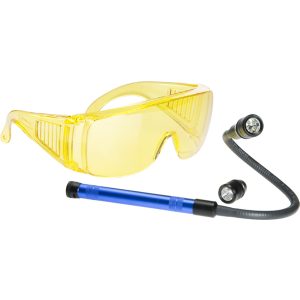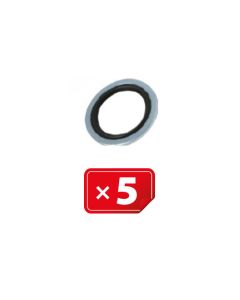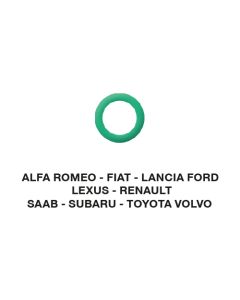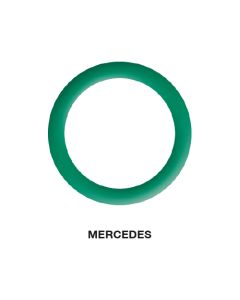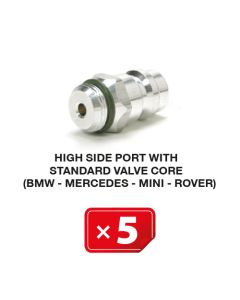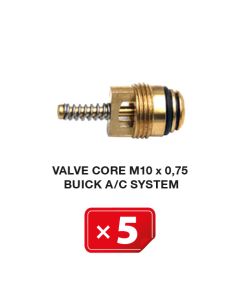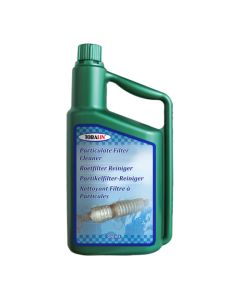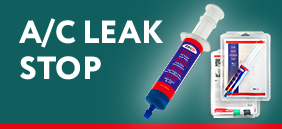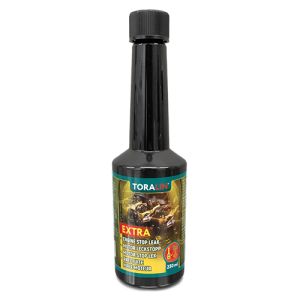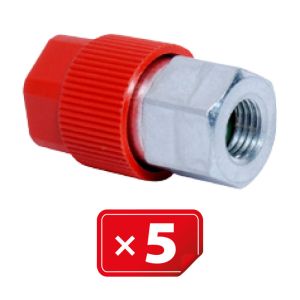LED UV Lamp with Flexible Probe
LED UV Lamp with Flexible Probe, two heads and UV Glasses. The lamp comes with safety glasses.
LED UV Lamp with Flexible Probe, two heads and UV Glasses to locate refrigerant gas leaks even in the most difficult positions to light.
How does LED UV Lamp work?
Screw the UV head to the body of the lamp, directly or through the probe; inspect all A/C systems components; in the presence of leak detector dye, this will fluoresce.
Technical Features:
• Power supply: 3 batteries "AA” of 1.5 V.
• Goggles: 100% anti-UV protection.
• LED wavelenght: 385-380 nm.
• 5 white led head.
• Aluminium body.
• Safety goggles
LEAK DETECTOR LAMP
Power supply: 3 batteries “AA” 1.5 V
UV light frequency: 385 - 380 nm
White light
Don’t forget the “UV” when selecting your next UV light.
What is Ultra Violet (UV)?
Ultra Violet (UV) dye additives are specially formulated to fluoresce in the present of UV light rays. Hence the common industry names for the two major components used with this technology, “UV” dye and “UV” lights. Referring to the chart above you can see that true “UV” light is invisible to the human eye, with the closest visible light colors being purple and blue respectively. The overall intensity of UV light diminishes as you move from the invisible UV light range to purple, then to blue and so on down the chart. Take care not to confuse a lamp that emits high intensity visible blue light as superior to a lamp tuned more efficiently to emit true UV light.
Why BLUE is NOT necessarily cool?
A correctly tuned Ultra Violet (UV) lamp should predominantly emit invisible UV light waves with only a trace of visible “purple” or “blue” light. The small amount of visible light is required to direct the user’s eyes to the leak search area, while the invisible UV light rays actually illuminate the leaking dye. Lamps that emit large amounts of visible blue light have been marketed heavily as being more powerful and more effective at fluorescing leaks, backed by the obvious high output of visible light. Knowing that UV dye additives requires invisible true UV light rays to effectively fluoresce dispels this claim altogether. In fact, special “blue blocking” glasses are required for use with these high output blue lamps in order to remove the nuisance blue light from the vision of the user during the leak search process. Otherwise, the high output of light will mask the actual leak or illuminating dye additive.















